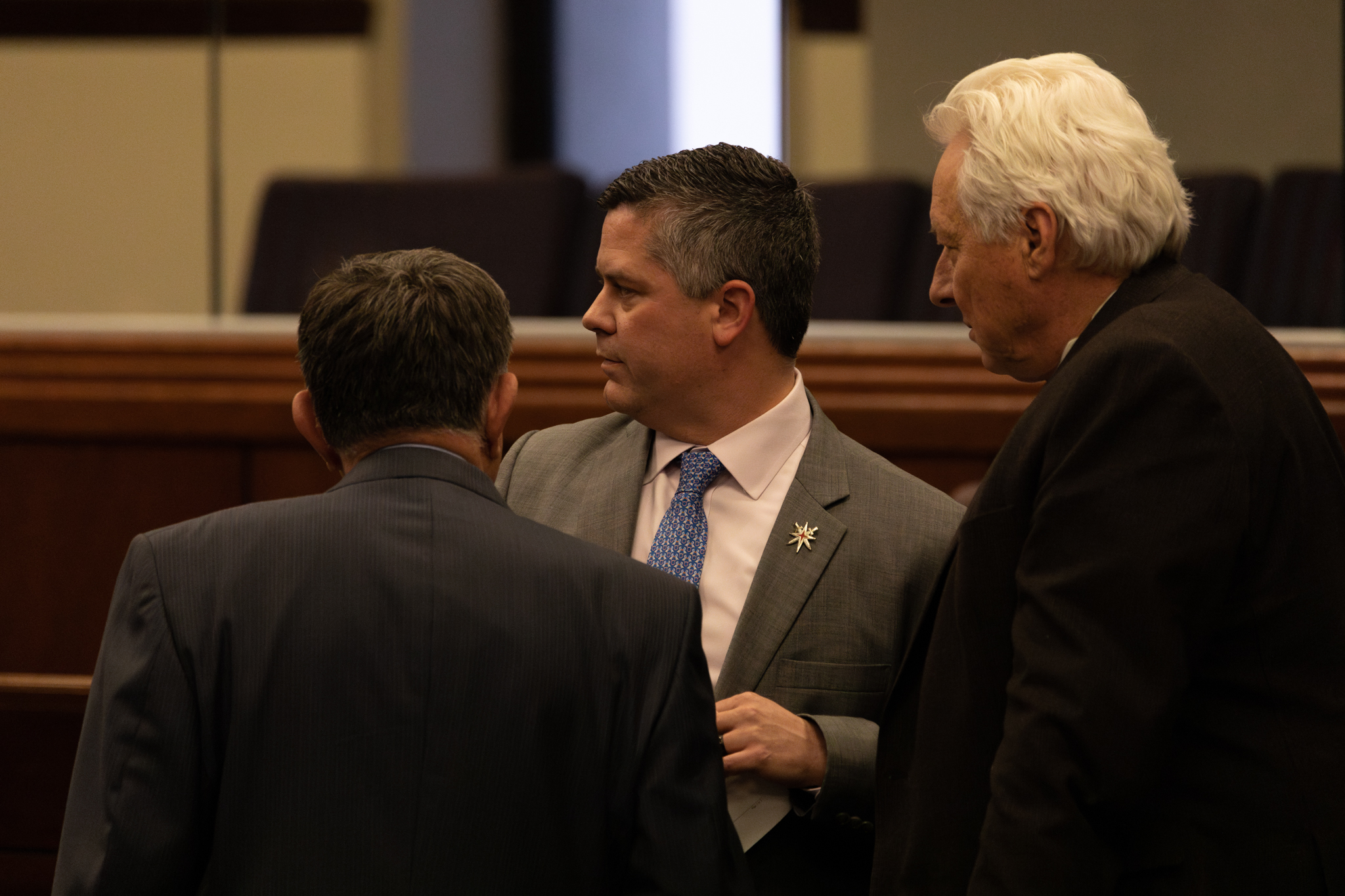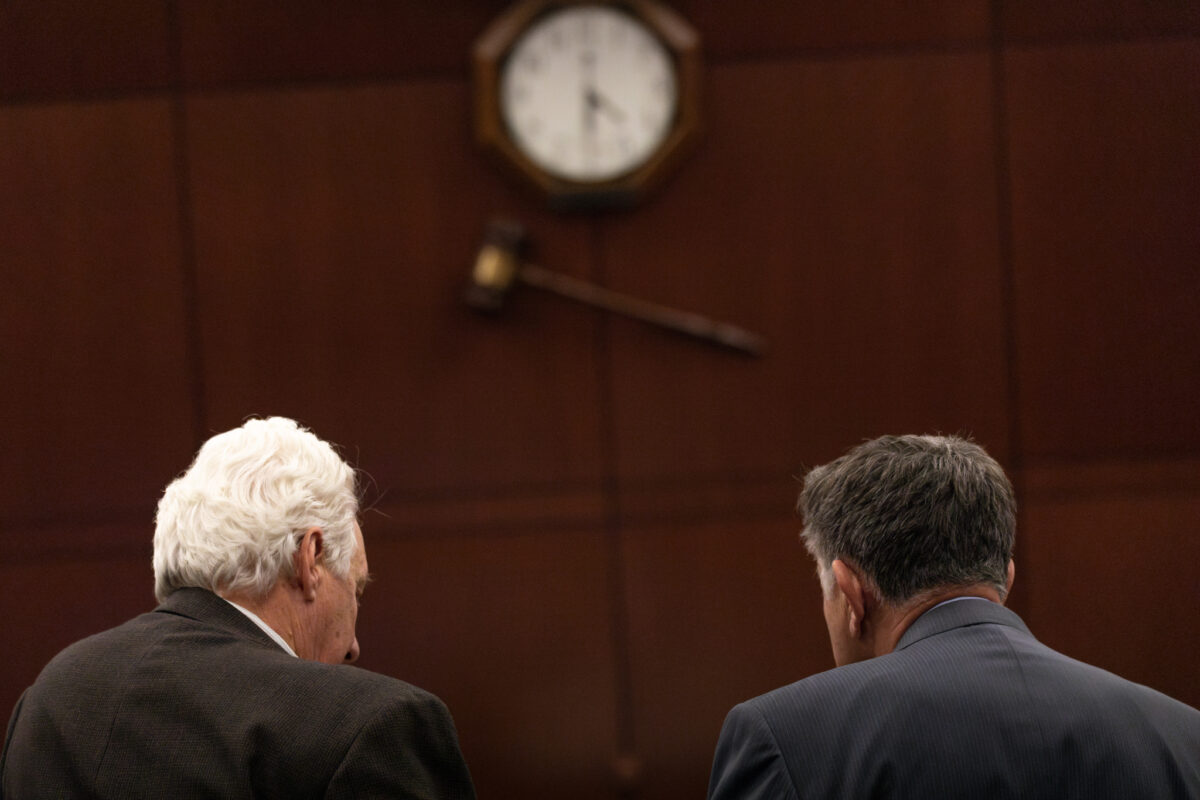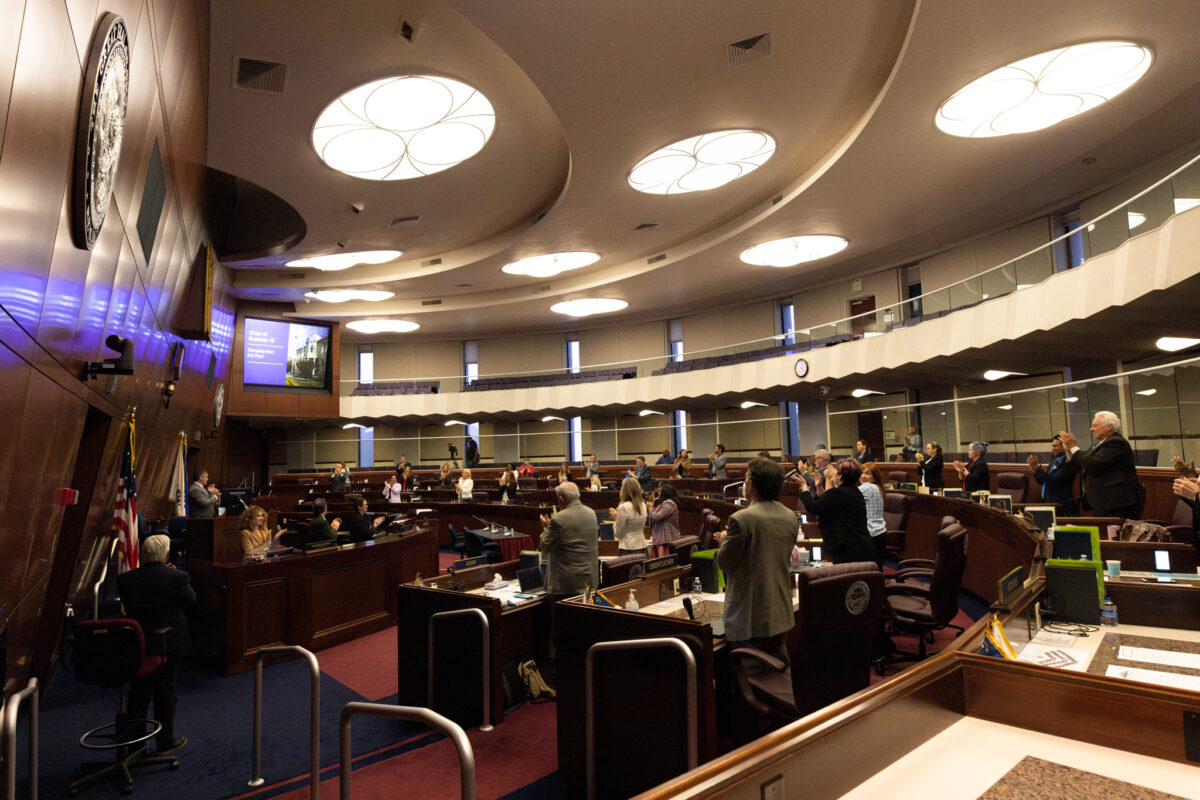A’s stadium bill clears Legislature, heads to Lombardo’s desk

The Oakland A’s moved one step closer to securing their move to Las Vegas on Wednesday after the state Assembly voted 25-15 to pass a bill sending up to $380 million in public money toward the construction of a new baseball stadium on the Strip.
The Senate moved late Wednesday to concur on the latest amendment, sending SB1 to Gov. Joe Lombardo’s desk a full week after he called the Legislature into a special session to consider the legislation. The Republican governor is expected to sign the bill into law.
His signature on SB1 would establish a path for the A’s to receive public funding for a proposed $1.5 billion, 30,000-seat ballpark in Las Vegas, if the team moves forward with relocation from Oakland.
The bill would set up a public financing package for the stadium of up to $180 million in transferable tax credits (which the A’s could sell for cash to other businesses), an estimated $120 million in county bonds to be paid off through revenues generated by the stadium and a $25 million credit from Clark County to address infrastructure needs around the ballpark.
The 25-15 vote saw 15 Democratic and 10 Republican Assembly members vote in support of the bill, with 11 Democratic and four Republican Assembly members in opposition. Two Assembly Democrats were absent for the vote.
Several members speaking in support focused their remarks heavily on the potential economic impact of a new stadium, especially as a means to fill state coffers with new revenue.
“We put $2.2 billion into our education system, I want to see that continue,” Assemblywoman Shannon Bilbray-Axelrod (D-Las Vegas) said, referencing a boost to K-12 spending approved in the regular session. “And unfortunately, without new thinking out-of-the-box revenue streams, that isn’t going to happen.”
But despite the amendments to the bill, some members remained steadfast in their opposition, including Assemblywoman Selena La Rue Hatch (D-Reno), who described the proposal as a reckless waste of public funds and said she did not support providing millions of dollars to a billionaire team owner.
Even with the governor’s signature expected on the measure, the A’s still face a number of hurdles in the team’s push for relocating from its home of 55 years, including receiving approval from Major League Baseball for their relocation, securing upward of $1.1 billion in private financing to fund the stadium and figuring out a temporary home as the stadium is built over the course of several years.
New changes introduced through an amendment adopted Wednesday in the Assembly would tighten the community benefits agreement between the team and the Las Vegas Stadium Authority as well as boost the team’s financial commitment to that agreement and move a proposed investment of certain excess tax revenues from a homelessness prevention fund to a county fund supporting low-income housing.
Approval comes after a week of little movement as lawmakers engaged in talks with lobbyists and representatives of the team largely behind closed doors. That led to a pair of amendments unveiled Tuesday, including one restricting the stadium’s location to the Tropicana site, strengthening oversight of a community benefits agreement and diverting part of the tax revenue stream to speed up the amount of money coming into a homelessness prevention fund.
The other amendment to the bill resurrected two bills Lombardo had vetoed just this month. One would require rail and monorail projects to comply with the state’s prevailing wage law, and the other would require companies with more than 50 employees seeking state tax abatements to provide their employees with at least 12 weeks of paid family and medical leave a year.
That amendment appeared key to swaying two Democratic holdouts in the Senate — Sen. Edgar Flores (D-Las Vegas) and Sen. Fabian Doñate (D-Las Vegas) — who both cited the changes ahead of voting to pass SB1 on Tuesday.

A’s path forward
In a statement emailed by A’s Wednesday evening, the team said it looked forward to watching Lombardo sign the legislation.
“Tonight, we thank the members of the Nevada State Legislature and their staff for their hard work, due diligence, and attention to detail as we work to bring the Athletics to Las Vegas,” the team said. “We are especially grateful for the legislators’ time and dedication to shepherding this bill through the process, including the special session. We look forward to Governor Lombardo’s signature as our next step.”
Before proceeding with the stadium construction, the team must also negotiate with the Las Vegas Stadium Authority to establish a development agreement, lease agreement and non-relocation agreement, as well as a community benefits agreement for certain investments in the Las Vegas community. The team and any developer partner it works with will also be required to pay for the first $100 million of development costs on the ballpark.
The final designs for the ballpark will also need to be evaluated by the Federal Aviation Administration (FAA) because the stadium site is located roughly 2 miles from the entrance to Harry Reid International Airport.
In an interview with The Nevada Independent last month, Jeremy Aguero, a principal analyst at economic advisory firm Applied Analysis, which the A’s hired to conduct research on the proposed stadium, said the team has had “preliminary conversations” with the Clark County Department of Aviation, which operates Reid Airport.
In a statement, the FAA said developers must provide the agency an opportunity to evaluate proposed structures near airports to determine whether they could pose a hazard to aircraft or interfere with navigation aids.
The FAA said its determination is a recommendation and is not binding.
“The FAA does not have the authority to limit building heights, and the decision to issue a building permit is up to the local government,” according to the statement from the agency. “However, many local governments and states have laws that prohibit issuing building permits if the FAA determines a structure would pose a hazard to air navigation.”
The Tropicana hotel towers are expected to be demolished ahead of the stadium’s construction.
The initial renderings for the ballpark provided by A’s showed the stadium with a large halo structure and other features, such as high-definition LED video boards that could be determined a distraction by the FAA because the airport’s north-south runways sit roughly a mile from the proposed ballpark site.
“This is not that different from Allegiant Stadium,” Aguero said. “A lot of the same questions and concerns came up before, such as the proximity to where Allegiant is located and its configuration. Certainly, if there are issues, I think everybody believes they can be resolved.”

Update: 6/14/23 at 7:30 p.m. — This story was updated to include a statement from the Oakland A's.
Update: 6/14/23 at 5:54 p.m. — This story was updated to include details on the Senate concurrence late Wednesday, following the Assembly vote.
Update: 6/14/23 at 6:19 p.m. — This story was updated to include additional details from floor speeches ahead of the Assembly vote.



